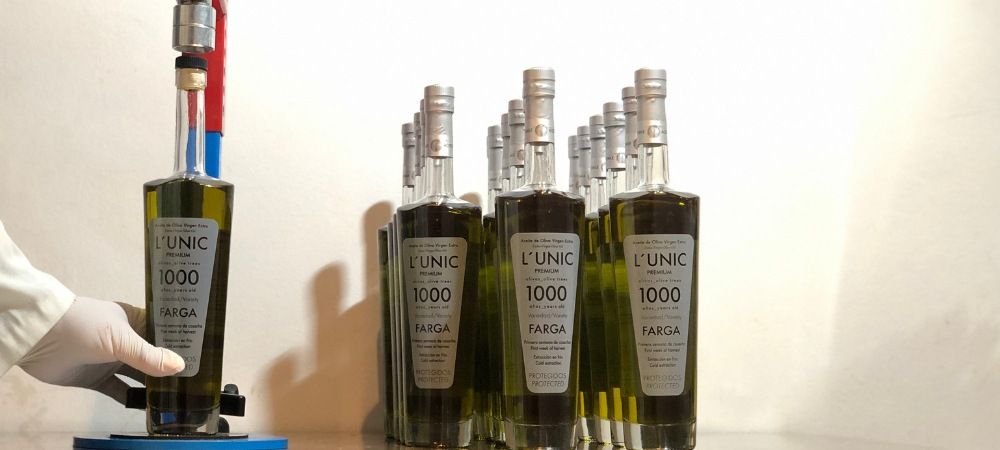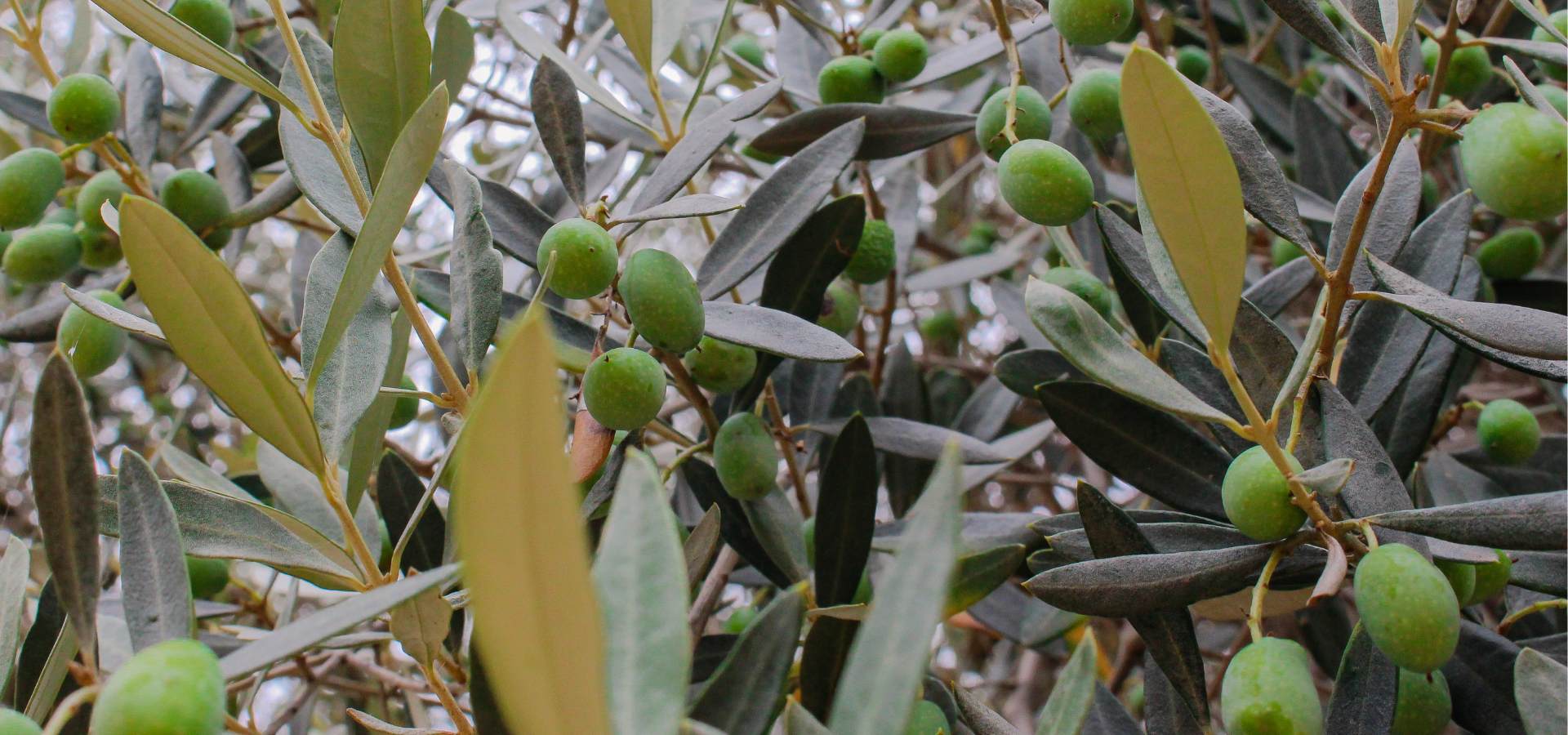The process of making Olive Oil
Production process

First stepRipening of the olives
Pre-spawning time
The process of making Olive Oil starts in mid-September, we begin to monitor the ripening process of our olives and just at the time of pre-veraison when there are more green olives than green and purple, the degree of ripeness is between 1.5 and 2.5 (there is an scale to measure the ripeness), we begin the harvest.
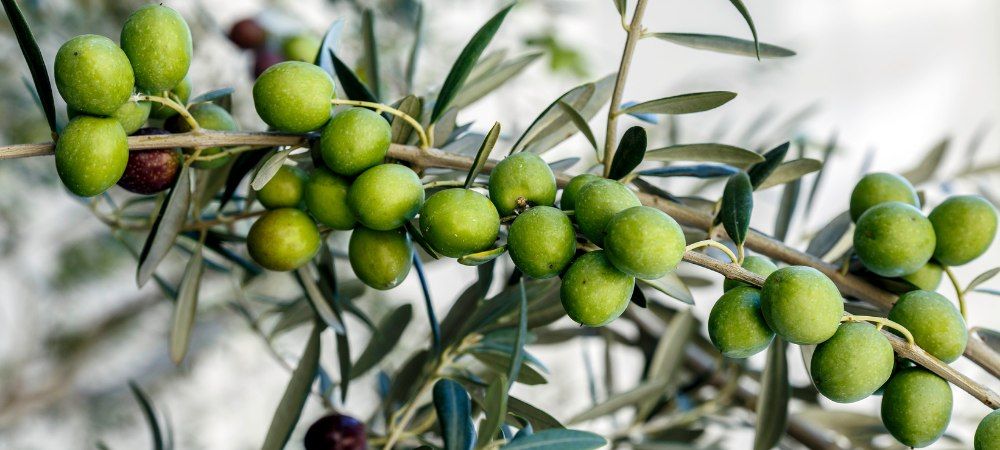


Second stepOlive Harvesting
Optimal time
We select the olives from those olive trees whose olives are at the right moment of pre-veraison, even from the same olive tree we select only a part of the olives. Within a maximum period of one week, we harvest the olives for the olive oil to be bottled, the rest is sold in bulk. Harvesting is done manually (with a vibrator) due to the size of the Millennial olive trees and the fragility of their branches.
We are only able to harvest approximately 75% of the production of each olive tree, due to the difficulty involved in the height of the trees.
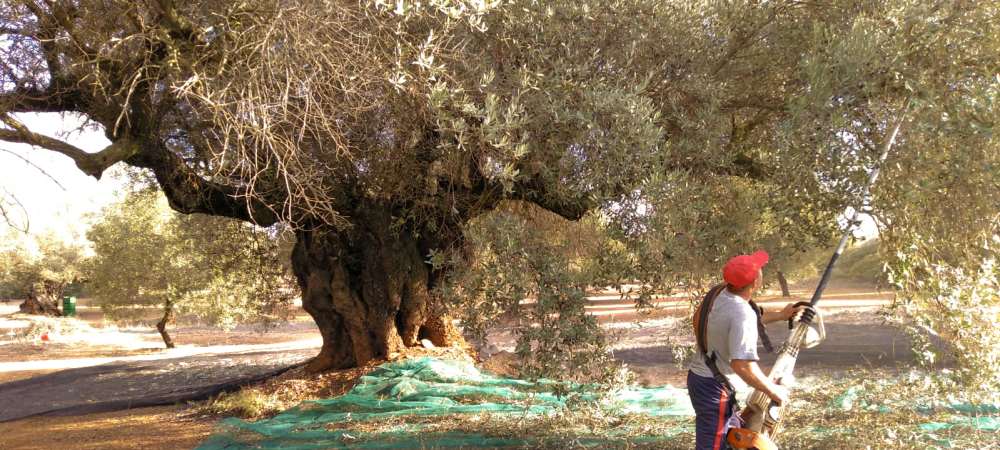


Third stepTransport of the olives to the oil mill
The olives are placed in individual 20kg ventilated boxes.
Our farms are less than 8 km from the mill, so the transport takes less than 10 minutes.
We mill the olives twice a day, once in the morning and once in the afternoon. It takes no more than 4 hours from the time the olives are harvested to the time they are converted into oil.
With such short times, we obtain a low degree of acidity and the oil retains all its freshness.
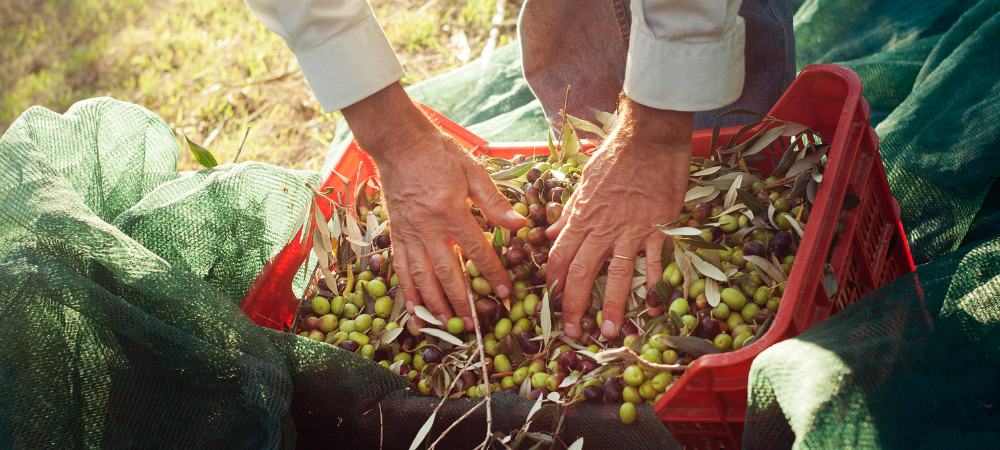


Fourth stepCleaning, milling, beating and centrifuging of olives
The olives pass through a ventilation system that separates them from the leaves and branches. Before entering the mill, any branches or impurities that may have remained are also separated manually.
The next step is grinding, which is done slowly and with a fine sieve, forming a very fine paste.
The beating is done at room temperature around 22º- 24ºC and we try to keep it short depending on the type of paste that is formed.
The next step is the horizontal centrifugation where we separate the liquid part from the solid part. The liquid part goes to the vertical centrifuge separating the oil from the water and the solid part goes to the pomace tank. The state-of-the-art vertical centrifuge uses only lukewarm water for its operation.
The first 5 liters that come out, which may contain some residue from the previous centrifugation, are separated and not bottled.
Finally, we have the precious new oil of the year!


Fifth stepDecanting, filtering and storage
From the vertical centrifuge, the oil is stored in conical-bottomed stainless-steel tanks for natural decanting. The solid particles and the small amount of water it may contain are concentrated at the bottom of the tank and extracted after 3-4 days.
Once the oil has been decanted, it is filtered in a paper filter machine and the result is a clean, shiny, glistening oil free of impurities and humidity.
From the filter, the oil is sent directly to stainless steel tanks always full with conical bottoms for storage.
In the warehouse, there are no great variations in temperature and we can speak of minimum temperatures of 14ºC and maximum temperatures of 26ºC, which guarantees good conservation of the product.
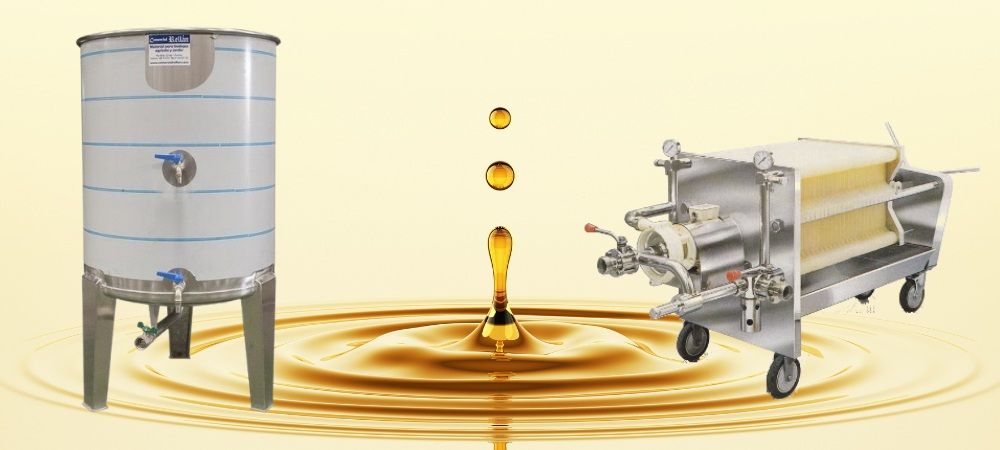


Last stepBottling by hand
We usually have a small stock of bottled oil and we bottle it as needed. The bottling process, given the small quantities, is manual, using a bottling machine that works by vacuum and the oil passes directly from the tanks to the bottles with a filtering process prior to bottling. The bottles are then closed by hand or by hand, caps machine, sealed and labeled by hand.
Each bottle is checked one by one and then each bottle is individually capped and numbered.
